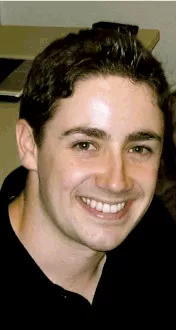
So now instead of designing dwellings, he makes molecules. “What we are trying to do is develop molecular recognition agents, molecules that bind to our target protein,” explains Gunning. “We first develop small molecules that bind to the target protein in isolation, allowing us to gauge the molecules binding potency for the protein.” Gunning’s research team mainly focuses on the development of inhibitors for the Signal Transducer and Activator of Transcription 3 (STAT3) protein function, which has a binding module (SH2 domain) that has proven to be receptive in therapeutic intervention. “The thrust of my work is trying to find therapeutics that target protein-protein interactions, which are typically under-investigated,” says Gunning.
His research includes therapeutics in several different types of cancer including breast cancer, leukemia, prostate cancer, glioblastoma (brain cancer) and multiple myeloma, which is cancer of the white blood cells. Once his research team completes their initial binding testing, they go to a more complex, whole-cell system because the goal is to create a molecule that is “cell permeable,” that still reaches its intended target inside the cell, despite the added obstacle of having to cross the cell membrane.
Further testing determines whether they are zeroing in on the cancer cells while leaving the healthy cells as intact as possible, and then they move to pharmacokinetic trials to see how the drug reacts to metabolism. “If it can’t withstand metabolism we go back and modify [the molecule] to make sure it is better equipped to withstand metabolic degradation, and then we have to back track even further to make sure it still retains its initial affinity for the protein,” explains Gunning. “At that stage, once we’ve got a molecule that withstands metabolism, still binds to the target, and shows potent whole cell activity in tumor cells, we would evaluate its in vivo potency in tumor xenograft models of human cancers.”
While Gunning’s collaborations are spread across the globe in Britain, the U.S. and Calgary, he is doing the bulk of his analysis in his U of T Mississauga lab and a fair amount of work in Toronto with research partners at the Hospital for Sick Children (Sick Kids) and Princess Margaret Hospital. Working with Aaron Schimmer and Suzanne Trudel at Princess Margaret Hospital, Gunning and his team are focusing on Leukemia and multiple myeloma. “We have developed a really potent compound,” expresses Gunning. “It’s an anti-STAT3 inhibitor, and it is working beautifully in cells, so it’s entered pre-clinical trials in a number of xenograph models already.”

Trying the same compound in brain cancer treatment is also on the horizon. Since glioblastoma is currently untreatable because of the delicacy of performing surgery on the brain, Gunning says molecular therapeutics is a most efficient way to target brain cancer. “This drug, we are hoping, can cross the blood brain barrier and suppress tumor formation inside the brain,” says Gunning. The research is also being done at SickKids in conjunction with Dr. Ab Guha (himself a cancer survivor, having been diagnosed with acute myeloid leukemia in 2008) and Dr. David Kaplan.
Gunning has now been working in this field for a number of years, and he has never regretted his decision to pursue chemistry. His PhD, which he completed at the University of Glasgow in 2004, was in molecular recognition of biologically relevant phosphates. It was there that he got hooked on the notion of designing molecules to bind to others, but it was his post-doctoral work at Yale University that sealed his fate. Working with Andrew Hamilton, Gunning became fascinated with the medicinal applications of molecular recognition. “What I particularly enjoyed about that was you were making small molecules that could actually affect a human disease – in particular, we were looking at breast cancer and pancreatic cancer,” says Gunning. “It was really neat making a molecule to target a particular protein and then seeing that molecule kill cancer cells. That for me was the clincher, and I decided this is where I want my research to be focused.”
Now despite all the intensity going on in the lab and the pressure he sometimes puts on himself to get a compound to clinical trials, Gunning hasn’t completely abandoned his artistic proclivities. “Some of the ideas that I have for molecules, I am not going to deny that I make them because they look cool,” Gunning says with a laugh. He draws and paints whenever he gets a chance – which isn’t often these days – and he prides himself on his knack for snagging the covers of scientific journals as often as possible. “It’s definitely my one link to my art, so I always tell my students, ‘You’ve got to come up with a really nice graphical image to go with the research, because whenever you publish, I want to see a front cover.’ And I try to make molecules that are different and kind of cool, which sounds completely non-scientific, but…molecules can be beautiful.”
By Carla DeMarco
